Resources
What is a Feeding Tube?
A feeding tube is a medical device used to provide nutrition to people who cannot take food through their mouth (orally), are unable to swallow safely or cannot take in enough calories orally, so may need additional supplementary nutrition.
Different Types Of Feeding Tubes:
Nasogastric (NG) Tube
Nasogastric (NG) or Nasojejunal Tube (NJ) – This is a tube that goes down the nose (Nasal) and either into the stomach (Gastric) or small intestine (Jejunum). These tubes are placed relatively easily at bedside in the hospital, however the doctor may send you for an X-Ray after it has been placed to confirm that it is in fact in your stomach or small intestine and not in your lungs. Generally the nurses will do a litmus test to confirm placement too. This is where they will draw some of your stomach contents out of the tube and put it onto a piece of litmus paper to determine the acidity of what they have taken out.
If the tube is in your stomach, the stomach acid will turn the litmus paper a different colour. If you are discharged with an NG tube, you may need to ask for litmus paper as it is recommended to confirm placement daily as an NG tube can move into your lungs which can be very dangerous. It is for this reason that generally you will not be discharged with an NG or NJ tube. The usual length of time that you would keep an NG tube in would be for about 4-6 Weeks. Long term use may cause damage to the lining in the nose and back of the throat, so in cases where patients are not expected to eat for a long time the doctors would rather recommend inserting a PEG.
The doctor would usually recommend an NG tube first, however in certain instances feeding into the stomach is not feasible or possible and then they would opt for an NJ. These are cases where the stomach does not work for medical reasons or even in cases with severe vomiting and reflux.
Percutaneous Endoscopic Gastrostomy (PEG)
Percutaneous Endoscopic Gastrostomy (PEG) or Percutaneous Endoscopic Jejunostomy (PEJ) – This is an endoscopic medical procedure where the feeding tube is surgically placed into your stomach or small intestine (sometimes both) through the abdominal wall. It is a much better option for patients that require long term tube feeding (Longer than 4 – 6 weeks) and once placed can stay in your stomach for many years (as long as it is needed). The tubes do experience usual wear and tear over time and because of this will need to be replaced every 4 – 6 months, however replacing a tube is a non-invasive procedure taking less than 5 minutes and is usually done by your stoma nurse (or yourself) at home. It is recommended that you rotate your tube 360 degrees every day to prevent the stomach lining growing around your tube.
There are different tubes available, the main ones are:
The “Dangler” (PEG) – is a long tube that is initially inserted into your stomach. It has a balloon that gets blown up once the tube is inserted to ensure that the tube remains in the correct place. These tubes can be quite inconvenient due to their length, so they are generally changed within the first 6 weeks of tube placement.
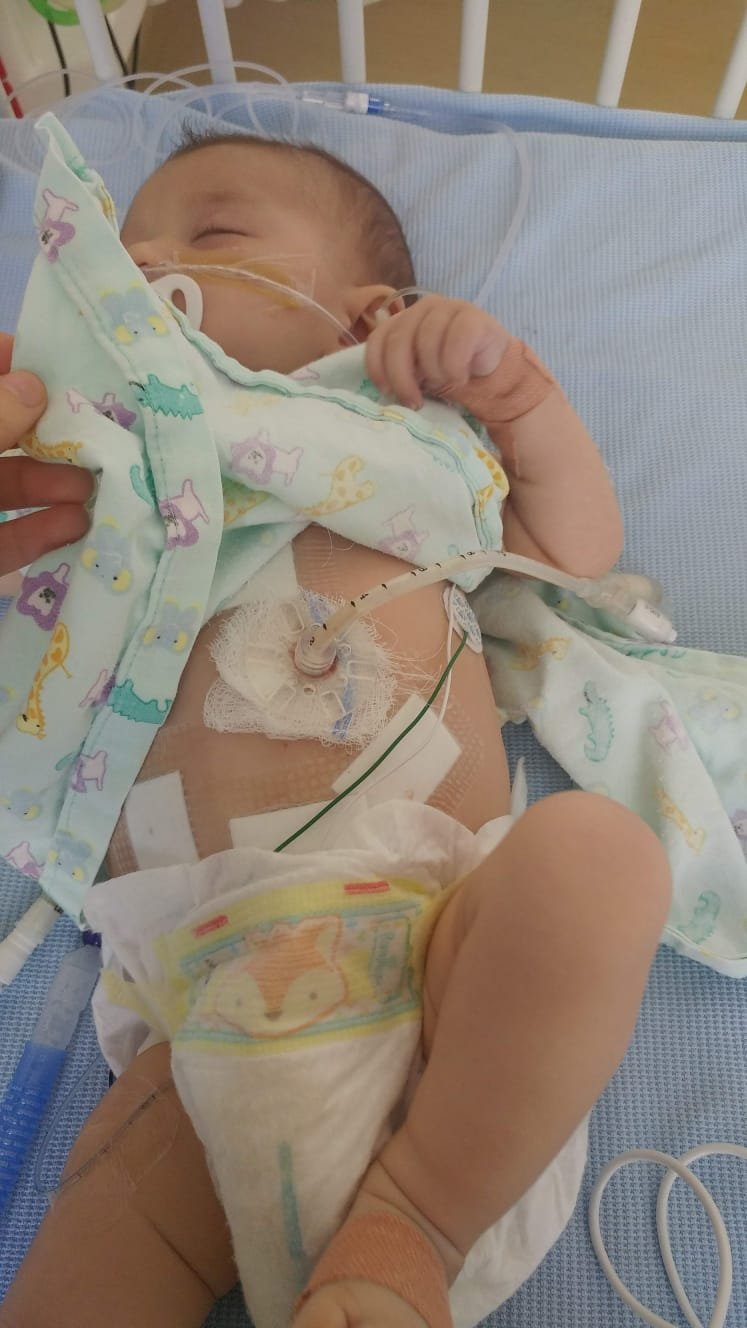
The Mickey Button (Gtube) – This is a much smaller and more manageable tube that will get placed after about 6 weeks of surgical placement. It is also held in the stomach with a balloon. It comes with tube attachments that are connected to the button at feed time, giving you a bit more freedom between feeds.
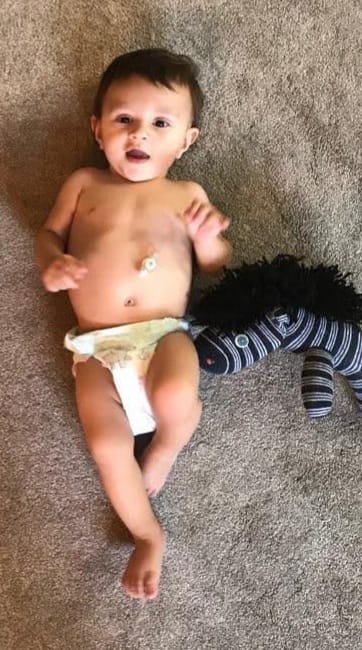
The MiniOne button (Gtube) – This is a smaller and more discreet feeding button that is available. It can be placed at the time of the surgery and this is usually done in babies, or you can change to this button around 6 weeks after surgery, but this will depend on your doctor. It also uses a balloon to keep it in place and has additional tube attachments which are connected at feeding time.
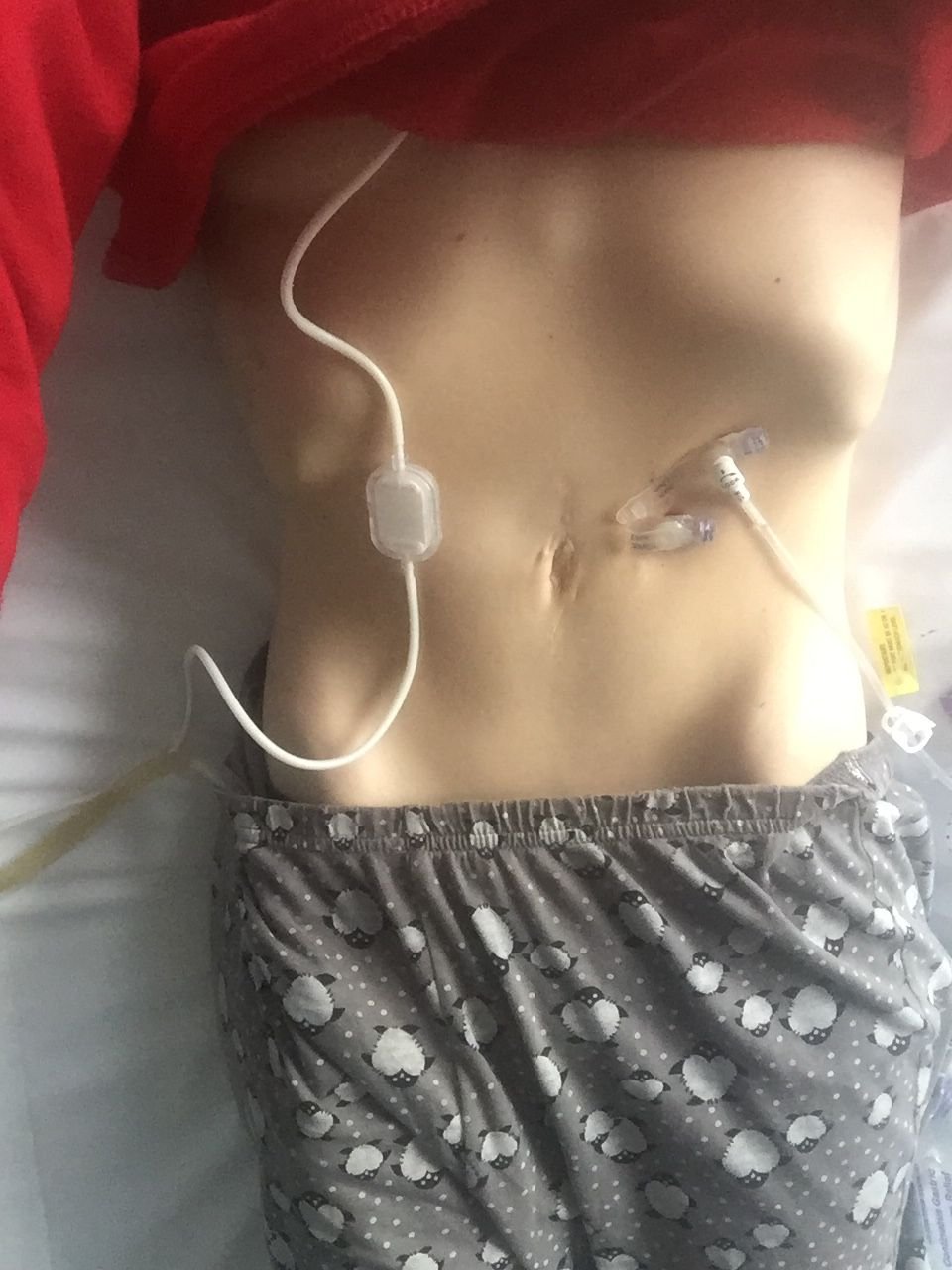
PEG J Tube – This is a gastrostomy tube with an extension into the Jejunum. It is used to feed the jejunum and vent the stomach (relieve gas build-up in the stomach) or drain the stomach.
Total Parenteral Nutrition (TPN) – This type of feeding is required when you cannot feed into the stomach or small intestine at all. It is a type of feed that will go directly into your veins either through a central access for long term TPN use (a direct line into your heart) or a peripheral line for shorter term use, usually not longer than a week which is inserted into your arm (like a regular IV).
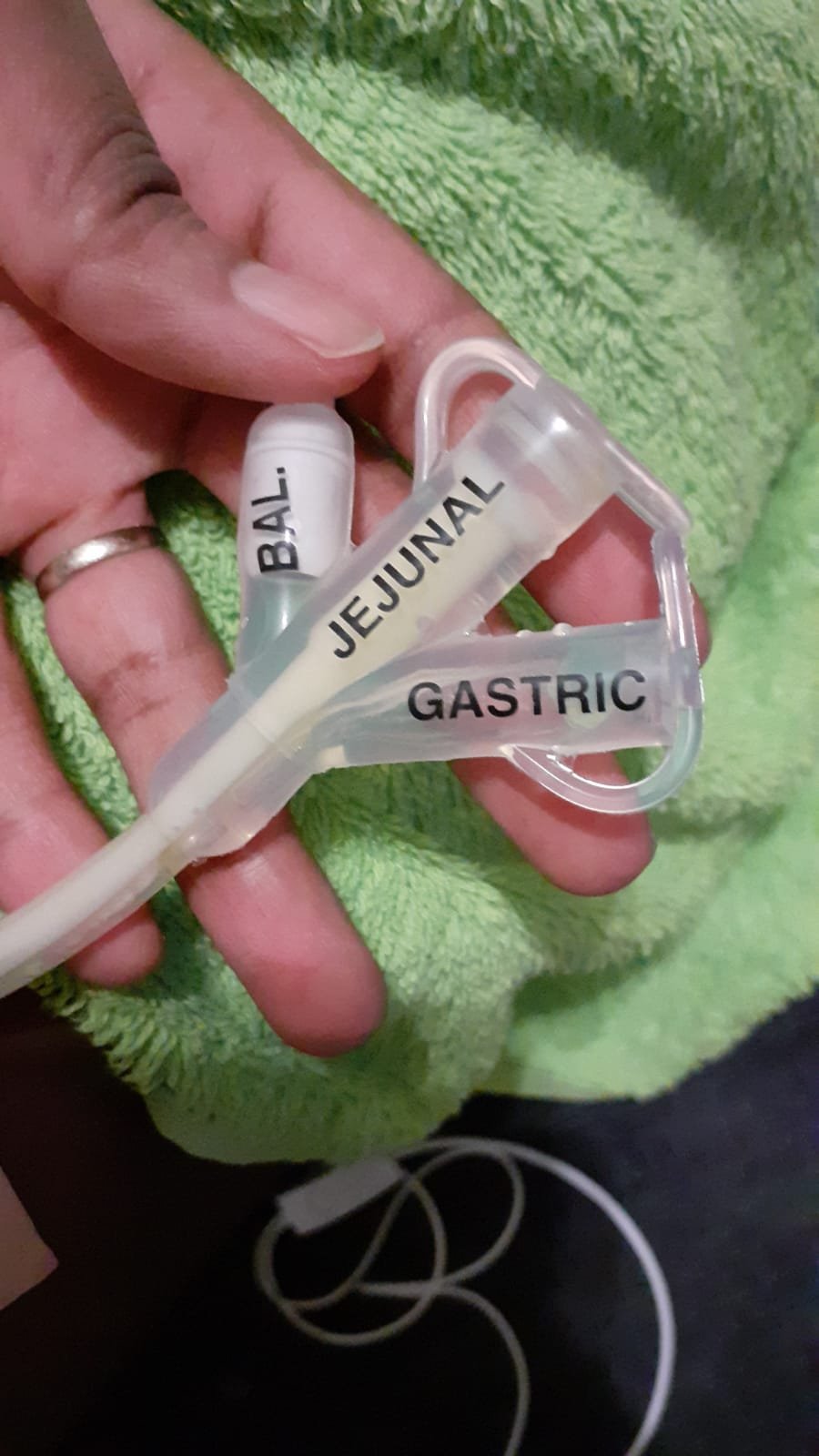
Feeding Regimes
There are a number of different feeding regimens available and it is most important to discuss these with your therapists and health care providers to find an option that will work best for you.
Continuous Feeds
This is a slow infusion of your feed over 24 hours. You would need a feeding pump to feed continuously. It is great for patients that cannot handle big volumes of feeds at one time and those struggling with vomiting and reflux. However, it is not convenient for home use as you are connected to a pump 24hours a day.
Intermittent Feeds
This is also done with a feeding pump but you are only connected at certain times of the day for example overnight feeds. It allows a lot more flexibility and a more normal lifestyle during the day, however meeting calorie requirements in restricted times may be difficult, so this is usually recommended when you are taking food orally during the day as well.
Bolus Feeds
This type of feeding regimen mimics normal eating patterns. You can feed with a syringe (gravity feeding) or a feeding pump set to a much shorter time target (so you would only feed for 20minutes for example). Feeds would be done at a usual breakfast, lunch or dinner time and it allows you to still eat together as a family. This type of feeding is usually done in infants and young children as well.
Combination Feeds
This is when you would combine different types of feeding regimens for example feeding for 8 hours at night with 2 bolus feeds in the day.
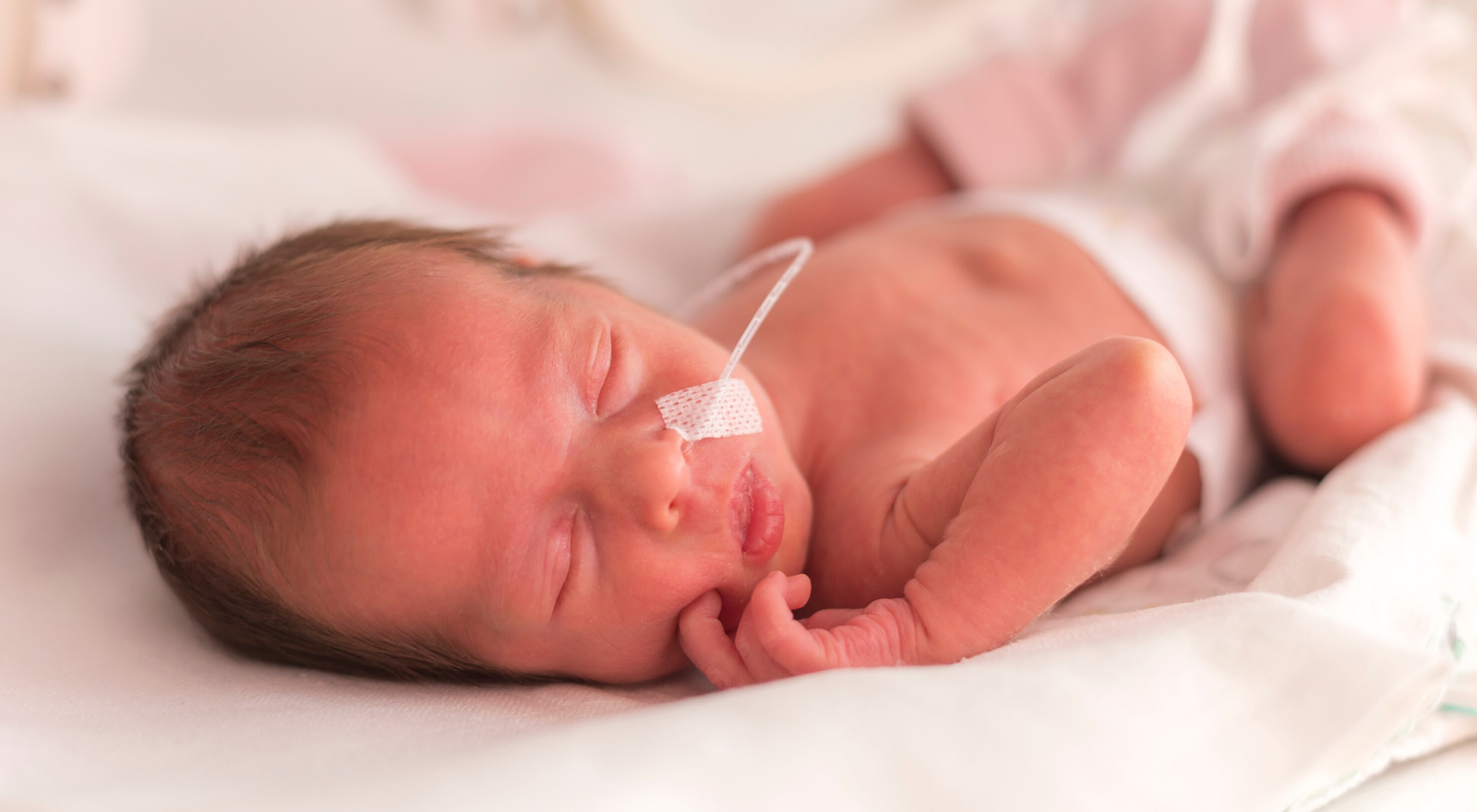
What Equipment Will You Need:
It can be very daunting to consider tube feeding at home and when we were being discharged I could barely remember what the nurses had said to me before we left about what we needed in store because of all the other millions of things you are trying to remember, so here is a list of things that will be beneficial to keep on hand before you are sent home:
- Syringes
- An extra feeding tube
- Extension sets if you have a low profile Gtube
- pH strips for NG at home
- Feeding pump and giving sets (if you are pump feeding at home)
- Stoma site care: Gauze, saline solution, Granulotion
Upcoming Events
12 August 2021
August online meetup
Join Us For Our August Online Zoom Support Meeting And Get The Re-assurance And Questions You Need Answered.



